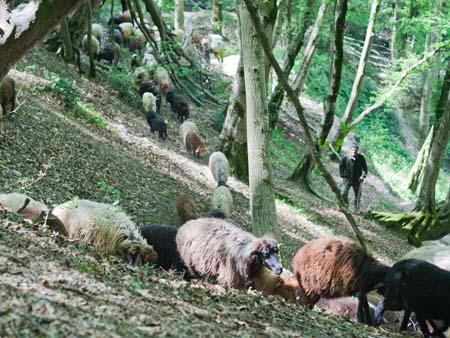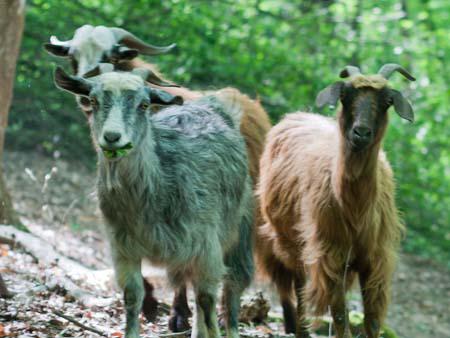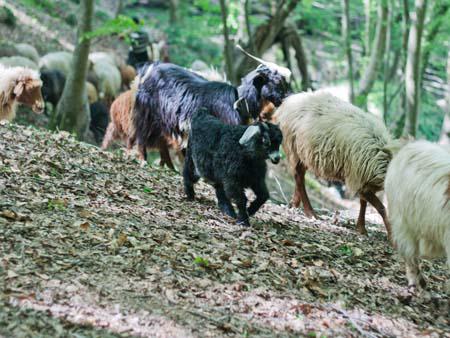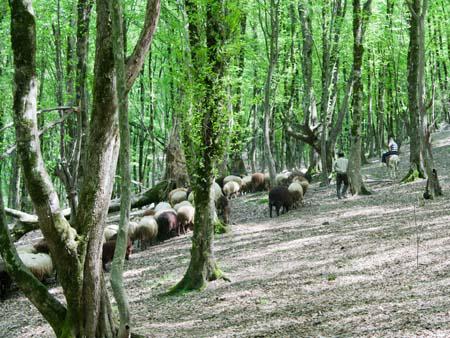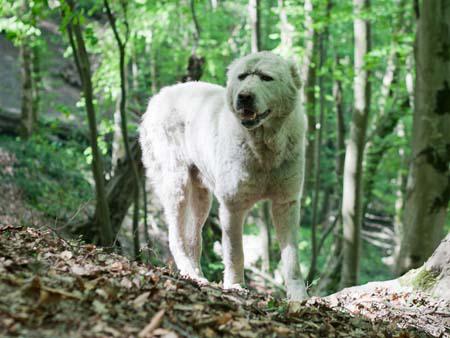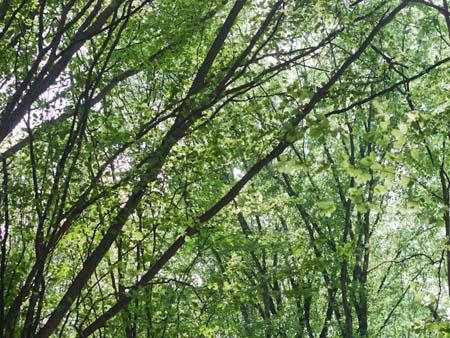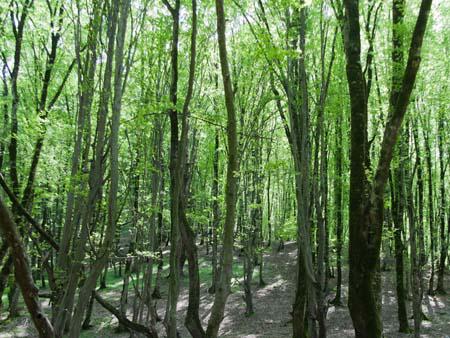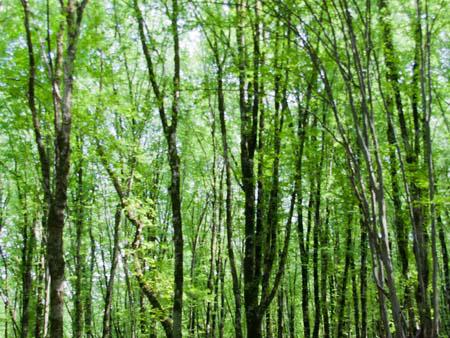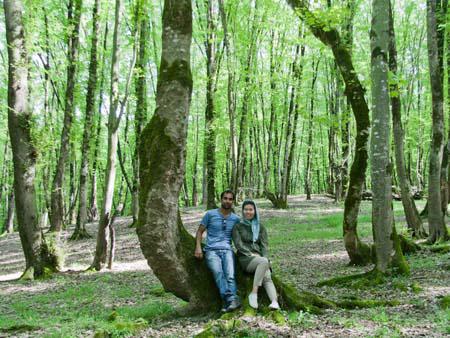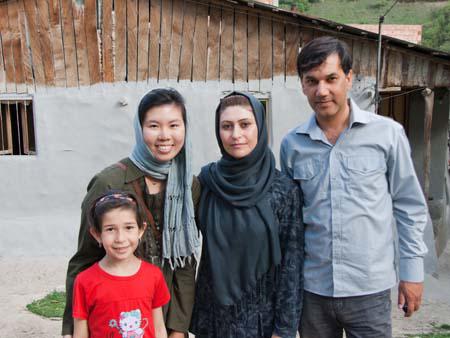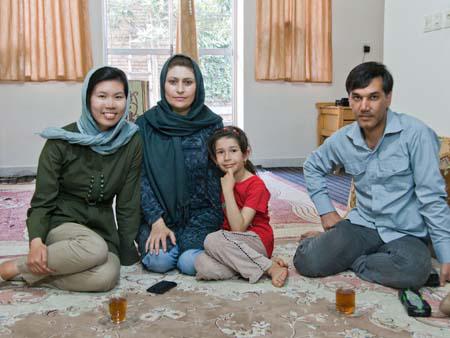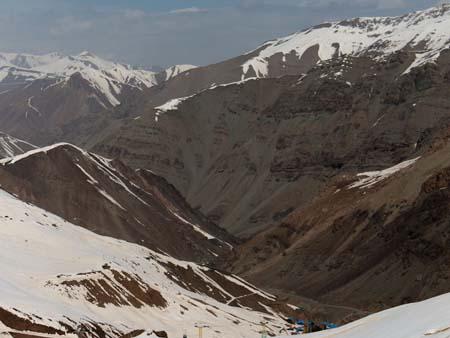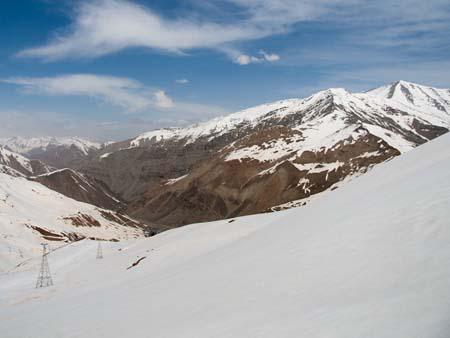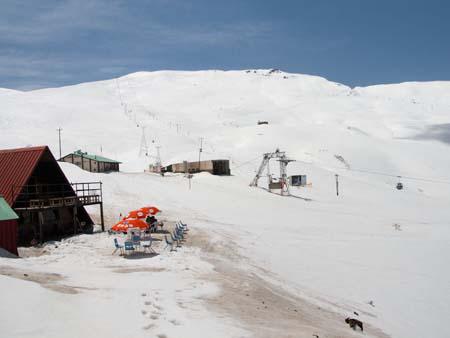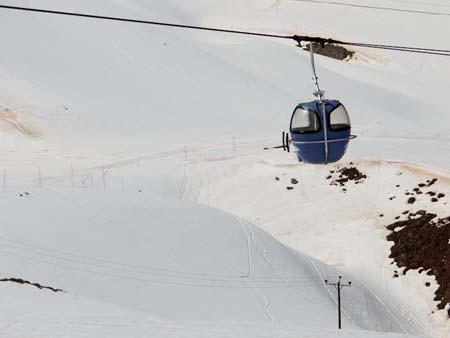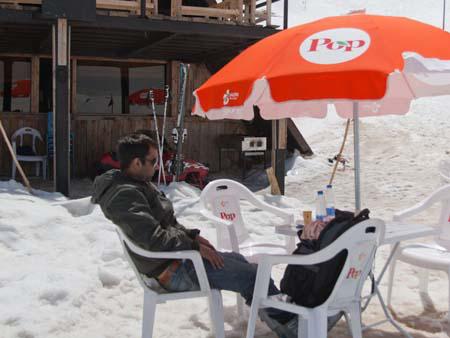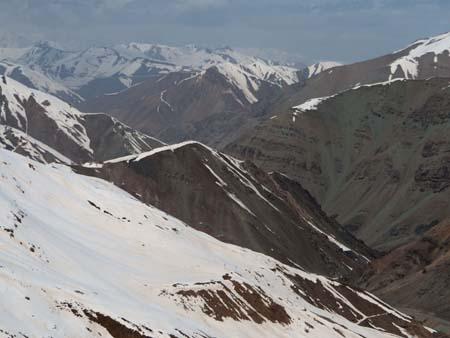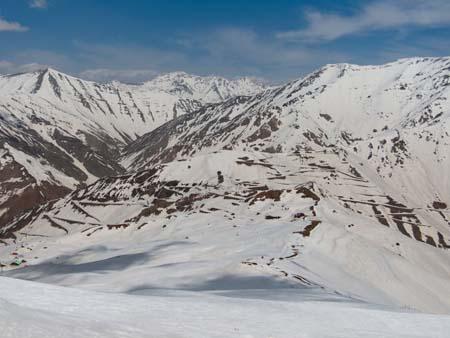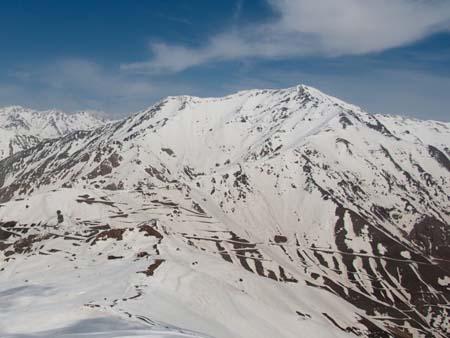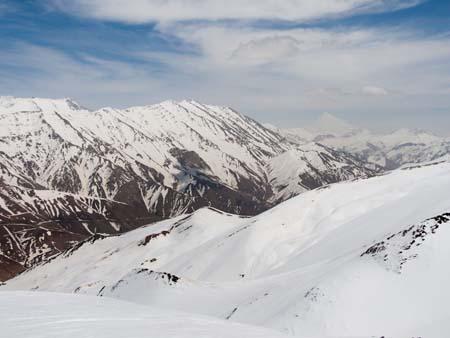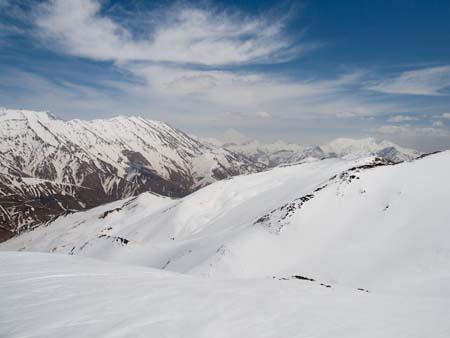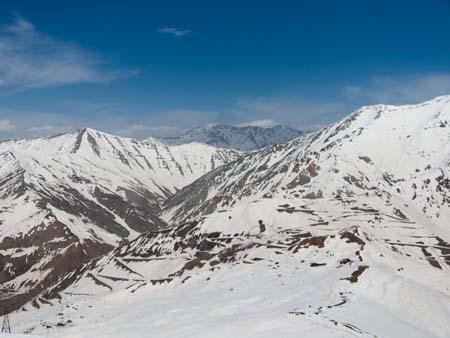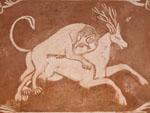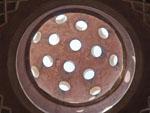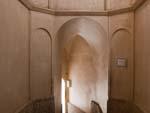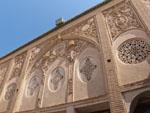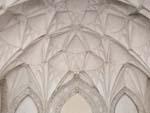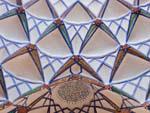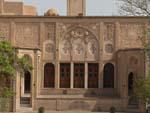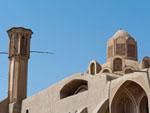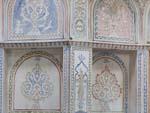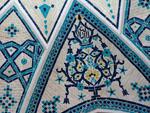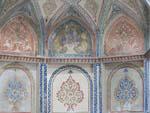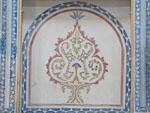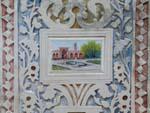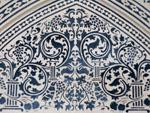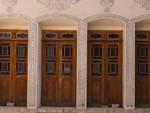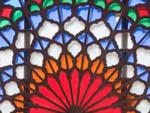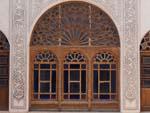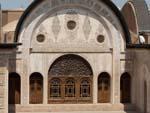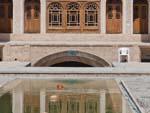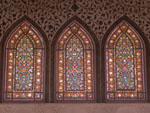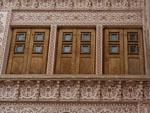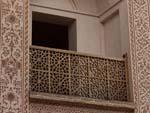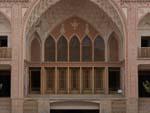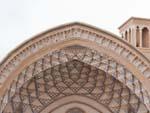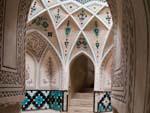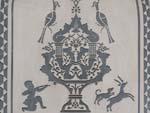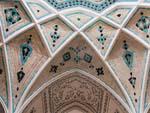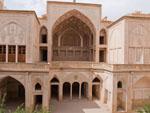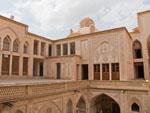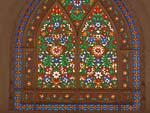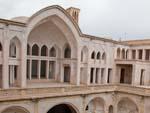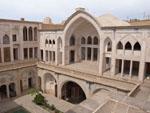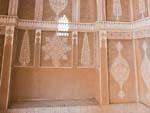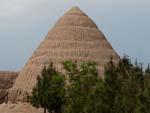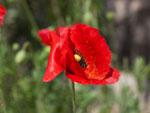We caught a bus from Esfahan to Tehran (the Iranian public-transport system is beautiful), our main goal in Tehran were Uzbekistan and Turkmenistan visas, we arrived on Sizdah Bedar (Getting rid of the Thirteenth) which is the thirteenth day of Nowruz (new day) and is celebrated by families heading outdoors and enjoying picnics, this meant that everything was closed, or as we know it, a public holiday.
thydzikgooglemap(http://sonyaandtravis.com/maps/iran-esfahan-to-tehran.xml)
Sharhr Park and Darband
For Sizdah Bedar we decided to join the Persians outdoors and headed to Shahr Park. On the way we started to notice a further Sizdah Bedar tradition, cars and even motorbikes attached a clump of Sabzeh (green sprouts) which had been growing since the start of the new year, on the thirteenth day these plants are thrown-out, supposedly along with any bad karma collected when growing.
While relaxing on a park bench we decided to visit Darband neighbourhood to hike the popular Alborz mountain range. The hike was quite strange, the whole path up was littered with restaurants, all begging for business, there were small grocery shops that sold drinks and snacks, and many men selling fruit (strawberries, cherries, apricots, etc) in a red syrup that we had to try. About half way along the track, Sonya decided it was time to turn around and head back, we stopped for lunch of kebab and rice (very common Persian food) at one of the many restaurants.
The next day when everything was back to ‘normal’, we decided with the loss of one day, we now should extend our Iran visas just in case, little did we know we actually required a lot more time anyway. To our dismay, at the visa extension office we found out this would take a further four days. During the next few days we visited the following;
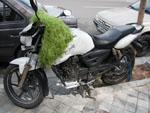
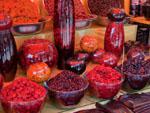
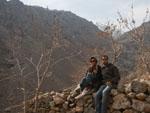
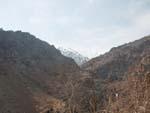
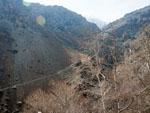
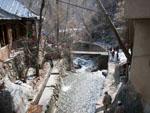
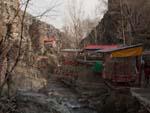

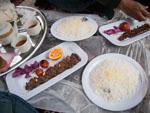
Treasury of National Jewels
The national jewels museum houses Iran’s priceless jewels and gold artefacts, mostly from the Safavid Persian period. Largest jewellery collection in the world, highlights include the Darya-i-Noor Diamond, the largest cut pink diamond at 182 carats (the new largest uncut pink diamond was recently found in an Australian mine), Peacock Throne (Naderi Throne) covered in gold and encrusted with 26,733 jewels and the gemstone globe.
National Museum of Iran
The National Museum of Iran houses a collection of artefacts from archaeological sites in Iran, a large portion found in Persepolis.
Interesting items included intricate ceramic and metal animal sculptures, a marble bust statue, stones bearing trilingual inscriptions and colourful mosaics and paintwork. The highlight was a large immaculate condition stone capital of two opposing bull heads removed from Persepolis.
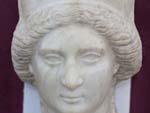
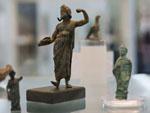
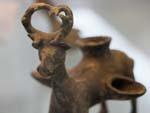
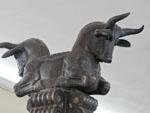
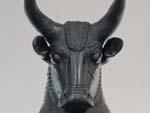
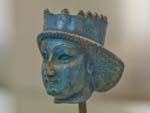
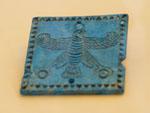
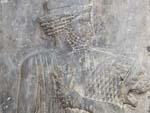
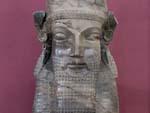
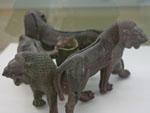
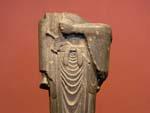
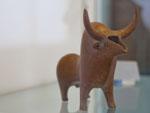
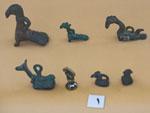
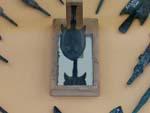
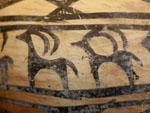
Golestan Palace
Golestan Palace (originally the royal Qajar palace) is made up of a collection of several individual buildings, now all housing unique exhibitions.
Takht Marmar (Marble Throne) – a mirror-roomed terrace featuring an elaborate yellow-marble throne.
Hoze Khaneh – originally a summer room, now houses a number of European paintings.
Shams-ol-Emareh (Edifice of the Sun) – a four-tiered building designed to provide panoramic views from the upper storeys.
Negar Khaneh – originally designed as a museum hall, no houses a number of Iranian paintings.
Talar Berelian (Hall of Brilliance) – features an amazing use of mirrors and elaborate chandeliers.
Museum of Gifts – houses a large collection of gifts received by the Qajar kings, one of the highlights being a decorated ostrich egg.
Talar Salam (Reception Hall) – this large main hall, initially planned as a museum hall, was then converted to a reception hall for foreign guests and dignitaries.
Abyaze Palace – now houses an ethological display, I particularly liked the explanation of Khata, a micro-mosaic inlay work from wood which we had seen in the bazaars, and the dolls with traditional dress of different Persian ethnicities.
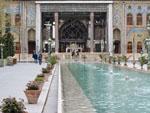
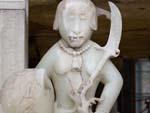
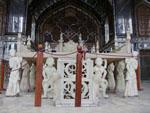
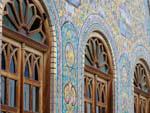
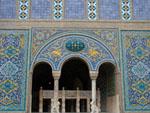
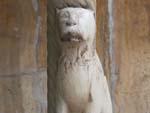
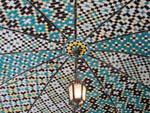
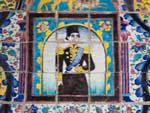
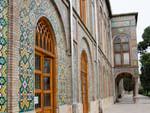
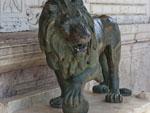
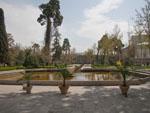
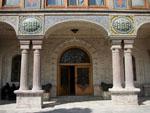
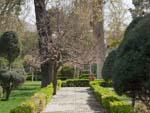
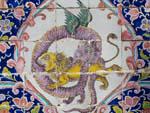
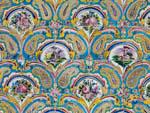
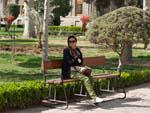

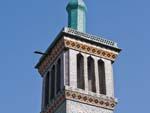
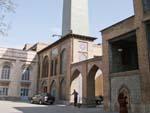
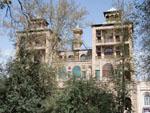

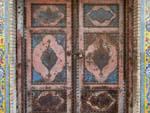
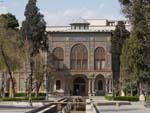
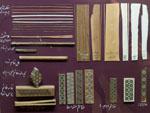
Niavaran Palace
The Niavaran Palace is where Shah Mohammad Reza Pahlavi spent the last years of his rule. Similar to the Golestan Palace, the Niavaran Palace is a collection of several buildings on the palace grounds;
Jahan-Nama Museum – housed a collection of local Iranian and foreign artwork, including pieces by Dali, Picasso and Warhol.
Sahebqraniyeh Palace – the oldest original building from the Qajar dynasty, last used as the Shah’s office. One of the interesting rooms was the personal dentist office, a room on the side of the main hall, had a dentist’s chair and all.
Niavaran Palace – the actual Niavaran Palace, a relatively modern plain building, has all original rooms, including private family bedrooms.
Ahmad-Shahi Pavilion – an attractive two-storey pink roofed building, houses an interesting collection of childhood possessions.
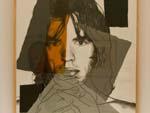
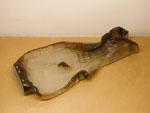
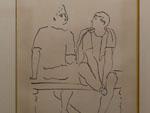
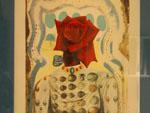
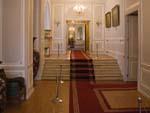
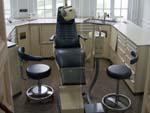

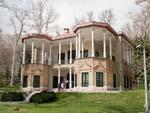
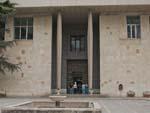
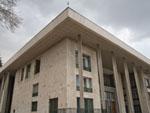
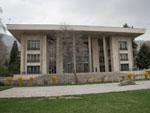
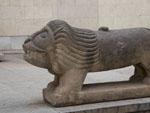
Azadi Tower (Borj-e Azadi)
Azadi Tower (Freedom Tower) situated to the west of the city is a well known symbol of Tehran and infamous as the site of many protests leading up to the Iranian Revolution. Based on elements of Sassanid and Islamic architecture, the forty-five metre structure is made from eight-thousand blocks of white marble stone.

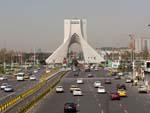

US Den of Espionage (former United States Embassy)
The United States Embassy was the location where students held fifty-two American diplomats hostage for 444 days. After the incident the embassy closed down, but what remains along the main wall are anti-American murals, the American flag stripes painted as barbed-wire, the Statue of Liberty painted as a skull. The most memorable and in-your-face was a “Down with USA” painted sign visible as soon as you leave the metro towards the embassy.
Holy Shrine of Imam Khomeini
One of Iran’s holiest sites, the Holy Shrine is the resting place of His Holiness Imam Khomeini. We caught the metro to the most southern station to visit the shrine, a plain building with strict security, inside is quite a moving experience as we sat and watched Muslims pay their respects.
thydzikgooglemap(http://sonyaandtravis.com/maps/iran-tehran.xml)




































































































